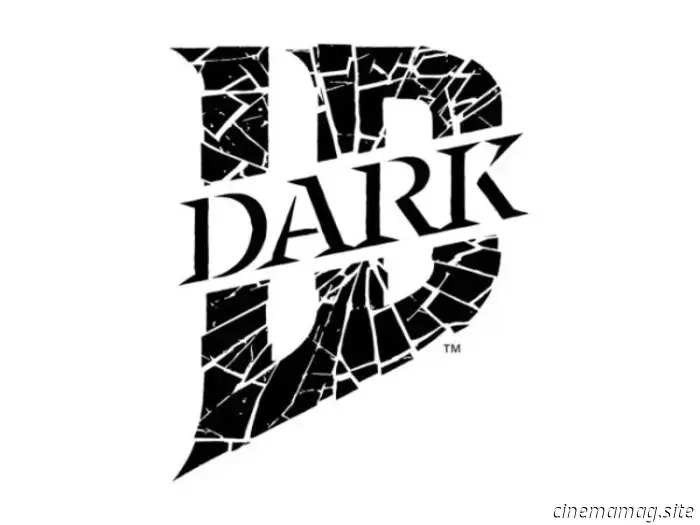-now-available-for-pre-order.jpg)
Capricorn’s $3.15M 01 Zagato revives analog excitement with a manual V8, artisanal design, and an emphasis on genuine driving experience 9 hours ago by Thanos Pappas The 01 Zagato marks Capricorn’s inaugural hypercar, designed by Zagato. Featuring a carbon monocoque and a V8 engine, it is limited to just 19 units, each priced starting at $3.15 million. In a market saturated with limited-edition supercars and hypercars flaunting impressive figures and complex designs, there is always room for another to leave its imprint. Introducing the 01 Zagato, a creation focused on the driver, developed by Germany's Capricorn Group in collaboration with the esteemed Italian design firm. This model maintains a refreshing simplicity by combining a non-electrified V8 with a manual transmission. More: Your Next Favorite Supercar Weighs Less Than a Miata and Features a Manual V12 While this is the first vehicle to showcase the Capricorn name, the company's expertise in performance engineering is extensive. Their lightweight materials have demonstrated reliability in some of the fiercest motorsport environments, supporting teams like Porsche in LMP1, Peugeot Sport in Le Mans and Dakar, Mercedes, Lotus, and Caterham in Formula 1, and Volkswagen in WRC. Capricorn's Founder and CEO Robertino Wild shares a close friendship with Zagato President Andrea Michele Zagato, leading to a project that merges “German engineering precision with Italian design elegance.” The objective was to create a road-legal hypercar that is “designed to be driven, experienced, and remembered.” Function Meets Tradition The design incorporates hallmark Zagato features such as the double-bubble roof, almond-shaped headlights, and sculpted fenders. However, its side profile also hints at influences from the Ford GT, while the wraparound glass and single wiper evoke a Koenigsegg silhouette, complemented by slim LED taillights reminiscent of Rimac's minimalism. Instead of depending on active aerodynamic features, the 01 Zagato employs precisely shaped intakes and outlets to generate consistent downforce. The aim was to make the vehicle approachable for skilled enthusiasts while remaining accessible for drivers lacking racing experience. Capricorn A Timeless Interior Capricorn designed the cabin, featuring a cluster of analog instruments situated behind a round steering wheel, with the central rev counter being the focal point. There are no infotainment screens to modernize the layout, just a small display for the rearview camera that retracts when not in use. This recalls a recent discussion about the revival of mechanical watches as luxury symbols after the Quartz Crisis, suggesting a similar trend is occurring with automotive displays. As digital screens proliferate in contemporary dashboards, there seems to be a renewed interest in traditional analog dials for premium vehicles. QOTD: We Need To Discuss Screen Overload in Cars. What’s Your Take on It? The switches are crafted from solid titanium and aluminum, combined with extensive use of exposed carbon fiber, Alcantara, and Connolly leather. The fixed seats provide adjustable cushioning, while the steering column, pedal box, and manual gear lever can all be adjusted for the ideal driving position. According to Capricorn, the interior can accommodate a variety of body types and includes a 110-liter front trunk for storage. Analog Driving Experience Underneath the carbon exterior lies an LMP1-style monocoque chassis also constructed from carbon fiber, along with carbon fiber front and rear subframes. The suspension features double wishbones and pushrod Bilstein dampers with three selectable driving modes (Comfort, Sport, and Track) and a four-wheel lift system. More: What’s It Really Like to Drive Your First Supercar? An electric power-assisted steering setup allows for easy maneuverability at low speeds, then disconnects at high speeds for direct, mechanical feedback. The 21-inch wheels, available in either lightweight alloy or carbon fiber, conceal Brembo carbon-ceramic brakes. Capricorn Ford Power This brings us to the powertrain, which defies the trend towards electrification. The mid-mounted supercharged 5.2-liter V8 is based on a Ford engine, further developed by Capricorn with custom components and tuning. The outcome is an impressive engine that produces over 888 hp (662 kW / 900 PS) and 1,000 Nm (737.6 lb-ft) of torque, propelling a car that weighs less than 1,200 kg (2,646 lbs) dry, comparable to a high-end Miata RF with a retractable hardtop. More: The World’s Most Renowned Design House Just Allowed AI to Take the Lead All that power is directed solely to the rear
Ezio Auditore da Firenze from Assassin’s Creed can now be pre-ordered in a feathered design as Numskull Designs unveils the Assassin’s Creed: Ezio TUBBZ (First Edition) within their popular TUBBZ series of adorable cosplaying ducks.
This official TUBBZ celebrates one of the most iconic characters from the franchise, with Numskull creating the ultimate feathered assassin. Dressed as Ezio, this charming duck features his distinctive hood, hidden blades, and renowned robes. Every detail of the costume has been meticulously designed to honor the legacy of the Assassin’s Creed series.
The First Edition TUBBZ is now available for pre-order, and if you have any interest in Assassin’s Creed, TUBBZ, or even ducks in general, be sure to secure yours quickly, as Numskull Designs anticipates this limited item will sell out fast.
The Assassin’s Creed: Ezio TUBBZ (First Edition) measures approximately 3.54″ (9cm) when out of its tub and comes with a branded tub, base print, and sticker, all priced at £19.99 / €24.99 / $24.99.
To obtain your own limited-edition Assassin’s Creed: Ezio TUBBZ (First Edition) cosplaying duck, visit the official website here.
-now-available-for-pre-order.jpg)
-now-available-for-pre-order.jpg)
-now-available-for-pre-order.jpg)
-now-available-for-pre-order.jpg)
-now-available-for-pre-order.jpg)
Other articles
 LEGO marks the 20th anniversary of LEGO Batman by releasing new sets.
In honor of the 20th anniversary of the LEGO DC Batman theme, The LEGO Group is introducing three new Batmobile sets influenced by Joel Schumacher’s 1997 sequel Batman & Robin and Zack Snyder’s Batman v…
LEGO marks the 20th anniversary of LEGO Batman by releasing new sets.
In honor of the 20th anniversary of the LEGO DC Batman theme, The LEGO Group is introducing three new Batmobile sets influenced by Joel Schumacher’s 1997 sequel Batman & Robin and Zack Snyder’s Batman v…
.jpg) Film Review – The Woman in Cabin 10 (2025)
The Woman in Cabin 10, 2025. Directed by Simon Stone. Featuring Keira Knightley, Guy Pearce, David Ajala, Gitte Witt, Art Malik, Gugu Mbatha-Raw, Hannah Waddingham, Kaya Scodelario, David Morrissey, and others…
Film Review – The Woman in Cabin 10 (2025)
The Woman in Cabin 10, 2025. Directed by Simon Stone. Featuring Keira Knightley, Guy Pearce, David Ajala, Gitte Witt, Art Malik, Gugu Mbatha-Raw, Hannah Waddingham, Kaya Scodelario, David Morrissey, and others…
 Emily Browning stars in the trailer for the time-loop comedy "One More Shot."
Vertigo Releasing has unveiled a trailer, poster, and images for One More Shot, a time-loop comedy directed by Nicholas Clifford. Taking place on New Year’s Eve in 1999, the film centers on Minnie (Emily Br…).
Emily Browning stars in the trailer for the time-loop comedy "One More Shot."
Vertigo Releasing has unveiled a trailer, poster, and images for One More Shot, a time-loop comedy directed by Nicholas Clifford. Taking place on New Year’s Eve in 1999, the film centers on Minnie (Emily Br…).
 2025 BFI London Film Festival Review – Rotten Apples
Bad Apples, 2025. Directed by Jonatan Etzler. Featuring Saoirse Ronan, Eddie Waller, Jacob Anderson, Rakie Ayola, Robert Emms, and Sean Gilder. SYNOPSIS: A primary school teacher facing difficulties starts to…
2025 BFI London Film Festival Review – Rotten Apples
Bad Apples, 2025. Directed by Jonatan Etzler. Featuring Saoirse Ronan, Eddie Waller, Jacob Anderson, Rakie Ayola, Robert Emms, and Sean Gilder. SYNOPSIS: A primary school teacher facing difficulties starts to…
 The first trailer for The Mighty Nein, a spin-off of The Legend of Vox Machina, has been released.
Amazon MGM has unveiled the initial trailer for The Mighty Nein, a spin-off of the animated series The Legend of Vox Machina produced by Critical Role. The Mighty Nein draws inspiration from Critical…
The first trailer for The Mighty Nein, a spin-off of The Legend of Vox Machina, has been released.
Amazon MGM has unveiled the initial trailer for The Mighty Nein, a spin-off of the animated series The Legend of Vox Machina produced by Critical Role. The Mighty Nein draws inspiration from Critical…
 The Walking Dead makes its way into World of Tanks Blitz.
This October, the ultimate battle for survival in World of Tanks Blitz features the legendary horror of zombies from AMC’s iconic television series The Walking Dead, merging the two worlds.
The Walking Dead makes its way into World of Tanks Blitz.
This October, the ultimate battle for survival in World of Tanks Blitz features the legendary horror of zombies from AMC’s iconic television series The Walking Dead, merging the two worlds.
Capricorn’s $3.15M 01 Zagato revives analog excitement with a manual V8, artisanal design, and an emphasis on genuine driving experience 9 hours ago by Thanos Pappas The 01 Zagato marks Capricorn’s inaugural hypercar, designed by Zagato. Featuring a carbon monocoque and a V8 engine, it is limited to just 19 units, each priced starting at $3.15 million. In a market saturated with limited-edition supercars and hypercars flaunting impressive figures and complex designs, there is always room for another to leave its imprint. Introducing the 01 Zagato, a creation focused on the driver, developed by Germany's Capricorn Group in collaboration with the esteemed Italian design firm. This model maintains a refreshing simplicity by combining a non-electrified V8 with a manual transmission. More: Your Next Favorite Supercar Weighs Less Than a Miata and Features a Manual V12 While this is the first vehicle to showcase the Capricorn name, the company's expertise in performance engineering is extensive. Their lightweight materials have demonstrated reliability in some of the fiercest motorsport environments, supporting teams like Porsche in LMP1, Peugeot Sport in Le Mans and Dakar, Mercedes, Lotus, and Caterham in Formula 1, and Volkswagen in WRC. Capricorn's Founder and CEO Robertino Wild shares a close friendship with Zagato President Andrea Michele Zagato, leading to a project that merges “German engineering precision with Italian design elegance.” The objective was to create a road-legal hypercar that is “designed to be driven, experienced, and remembered.” Function Meets Tradition The design incorporates hallmark Zagato features such as the double-bubble roof, almond-shaped headlights, and sculpted fenders. However, its side profile also hints at influences from the Ford GT, while the wraparound glass and single wiper evoke a Koenigsegg silhouette, complemented by slim LED taillights reminiscent of Rimac's minimalism. Instead of depending on active aerodynamic features, the 01 Zagato employs precisely shaped intakes and outlets to generate consistent downforce. The aim was to make the vehicle approachable for skilled enthusiasts while remaining accessible for drivers lacking racing experience. Capricorn A Timeless Interior Capricorn designed the cabin, featuring a cluster of analog instruments situated behind a round steering wheel, with the central rev counter being the focal point. There are no infotainment screens to modernize the layout, just a small display for the rearview camera that retracts when not in use. This recalls a recent discussion about the revival of mechanical watches as luxury symbols after the Quartz Crisis, suggesting a similar trend is occurring with automotive displays. As digital screens proliferate in contemporary dashboards, there seems to be a renewed interest in traditional analog dials for premium vehicles. QOTD: We Need To Discuss Screen Overload in Cars. What’s Your Take on It? The switches are crafted from solid titanium and aluminum, combined with extensive use of exposed carbon fiber, Alcantara, and Connolly leather. The fixed seats provide adjustable cushioning, while the steering column, pedal box, and manual gear lever can all be adjusted for the ideal driving position. According to Capricorn, the interior can accommodate a variety of body types and includes a 110-liter front trunk for storage. Analog Driving Experience Underneath the carbon exterior lies an LMP1-style monocoque chassis also constructed from carbon fiber, along with carbon fiber front and rear subframes. The suspension features double wishbones and pushrod Bilstein dampers with three selectable driving modes (Comfort, Sport, and Track) and a four-wheel lift system. More: What’s It Really Like to Drive Your First Supercar? An electric power-assisted steering setup allows for easy maneuverability at low speeds, then disconnects at high speeds for direct, mechanical feedback. The 21-inch wheels, available in either lightweight alloy or carbon fiber, conceal Brembo carbon-ceramic brakes. Capricorn Ford Power This brings us to the powertrain, which defies the trend towards electrification. The mid-mounted supercharged 5.2-liter V8 is based on a Ford engine, further developed by Capricorn with custom components and tuning. The outcome is an impressive engine that produces over 888 hp (662 kW / 900 PS) and 1,000 Nm (737.6 lb-ft) of torque, propelling a car that weighs less than 1,200 kg (2,646 lbs) dry, comparable to a high-end Miata RF with a retractable hardtop. More: The World’s Most Renowned Design House Just Allowed AI to Take the Lead All that power is directed solely to the rear
Ezio Auditore da Firenze from Assassin’s Creed can now be pre-ordered in a new feathered design, as Numskull Designs reveals the launch of Assassin’s Creed: Ezio TUBBZ (First Edition).
